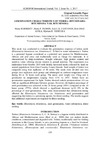Identificador persistente para citar o vincular este elemento:
https://accedacris.ulpgc.es/jspui/handle/10553/55467
| Campo DC | Valor | idioma |
|---|---|---|
| dc.contributor.author | Barberá, Marta | en_US |
| dc.contributor.author | Flores, María P. | en_US |
| dc.contributor.author | Castañón Rodríguez, José Ignacio | en_US |
| dc.contributor.author | Diaz-Avila, Erik | en_US |
| dc.contributor.author | Rodríguez Ventura, Myriam | en_US |
| dc.date.accessioned | 2019-05-22T08:46:17Z | - |
| dc.date.available | 2019-05-22T08:46:17Z | - |
| dc.date.issued | 2018 | en_US |
| dc.identifier.issn | 2490-3434 | en_US |
| dc.identifier.uri | https://accedacris.ulpgc.es/handle/10553/55467 | - |
| dc.description.abstract | This study was conducted to evaluate the germination response of tedera seeds(Bituminaria bituminosa var. bituminosa C. H Stirt) to water submersion t. Tederais a perennial legume considered as a potential new pasture for Mediterranean,African and arid areas and traditionally used as forage for ruminants. It ischaracterized by deep-rootedness, drought tolerance, high protein content andnutritive value, offering elevate interest in animal nutrition. The experiment wasundertaken from October 2015 with freshly harvested seeds collected by hand onnatural populations from Gran Canaria, Canary Islands. Seed weight of tedera wascompared using four replicates of 50 seeds. The seeds were divided into twogroups (two replicates each group) and submerged on ambient temperature waterduring 16 or 24 hours each group. The mean seed weight was 23mg and itgerminates in temperatures ranging from 12°C to 20°C. Tedera have nogermination requirement for light. Tedera showed radicle protrusionfrom 4-8 cmwith no significant difference between groups. However, the highest percentage ofseed germination was achieved in the 24 hours group (65%) compared to the 16hours group (27%), which showed a significant decrease (p<0, 05) in thepercentage of seed germination. This study demonstrated that submersion duringaffected the Bituminaria bituminosa var. bituminosa seed germination andsuggesting that tedera is a promising species for direct seeding. The results suggestthat additional experiments are required for direct seeding. | en_US |
| dc.language | eng | en_US |
| dc.relation.ispartof | Agrofor | en_US |
| dc.source | Agrofor [ISSN 2490-3442], v. 2 (1), p. 139-143 | en_US |
| dc.subject | 3109 Ciencias veterinarias | en_US |
| dc.subject.other | Bituminaria bituminosa | en_US |
| dc.subject.other | Seed germination | en_US |
| dc.subject.other | Water submersion | en_US |
| dc.subject.other | Direct seeding | en_US |
| dc.title | Germination characteristics of tedera (bituminaria bituminosa var bituminosa) | en_US |
| dc.type | info:eu-repo/semantics/article | es |
| dc.type | Article | es |
| dc.identifier.doi | 10.7251/AGRENG1701139B | en_US |
| dc.identifier.issue | 1 | - |
| dc.relation.volume | 2 | - |
| dc.investigacion | Ciencias | en_US |
| dc.type2 | Artículo | en_US |
| dc.identifier.ulpgc | Sí | es |
| item.grantfulltext | open | - |
| item.fulltext | Con texto completo | - |
| crisitem.author.dept | Departamento de Patología Animal, Producción Animal, Bromatología y Tecnología de Los Alimentos | - |
| crisitem.author.dept | GIR IUIBS: Nutrición | - |
| crisitem.author.dept | IU de Investigaciones Biomédicas y Sanitarias | - |
| crisitem.author.dept | Departamento de Patología Animal, Producción Animal, Bromatología y Tecnología de Los Alimentos | - |
| crisitem.author.orcid | 0000-0001-9037-2577 | - |
| crisitem.author.parentorg | IU de Investigaciones Biomédicas y Sanitarias | - |
| crisitem.author.fullName | Castañón Rodríguez, José Ignacio | - |
| crisitem.author.fullName | Rodríguez Ventura, Myriam | - |
| Colección: | Artículos | |
Visitas
150
actualizado el 16-mar-2024
Descargas
122
actualizado el 16-mar-2024
Google ScholarTM
Verifica
Altmetric
Comparte
Exporta metadatos
Los elementos en ULPGC accedaCRIS están protegidos por derechos de autor con todos los derechos reservados, a menos que se indique lo contrario.
